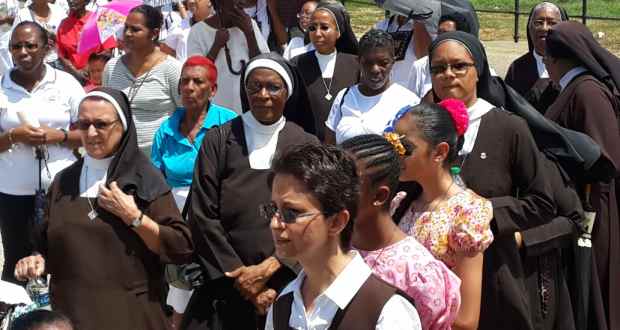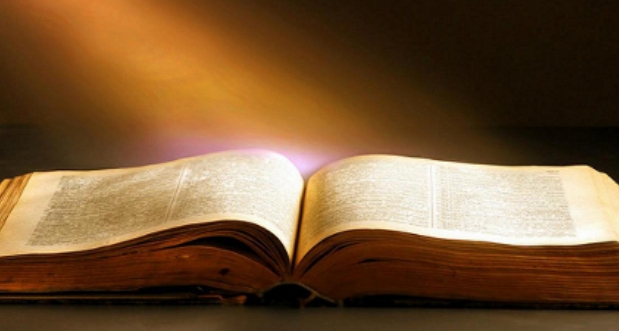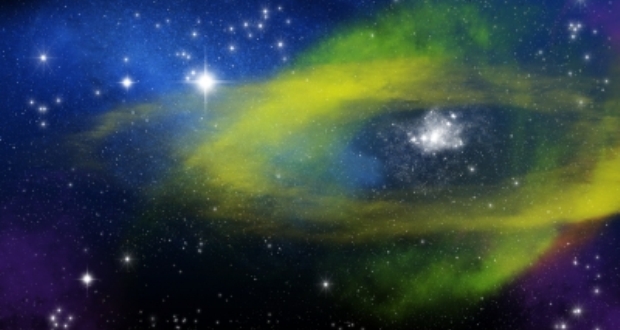Catechism Of The Catholic Church – Man

PART ONE
THE PROFESSION OF FAITH
SECTION TWO
THE PROFESSION OF THE CHRISTIAN FAITH
CHAPTER ONE
I BELIEVE IN GOD THE FATHER
ARTICLE I
“I BELIEVE IN GOD THE FATHER ALMIGHTY, CREATOR OF HEAVEN AND EARTH”
Paragraph 6. Man
Index
Male And Female He Created Them
355 “God created man in his own image, in the image of God he created him, male and female he created them.”218 Man occupies a unique place in creation: (I) he is “in the image of God”; (II) in his own nature he unites the spiritual and material worlds; (III) he is created “male and female”; (IV) God established him in his friendship.
356 Of all visible creatures only man is “able to know and love his creator”.219 He is “the only creature on earth that God has willed for its own sake”,220 and he alone is called to share, by knowledge and love, in God’s own life. It was for this end that he was created, and this is the fundamental reason for his dignity:
-
What made you establish man in so great a dignity? Certainly the incalculable love by which you have looked on your creature in yourself! You are taken with love for her; for by love indeed you created her, by love you have given her a being capable of tasting your eternal Good.221
357 Being in the image of God the human individual possesses the dignity of a person, who is not just something, but someone. He is capable of self-knowledge, of self-possession and of freely giving himself and entering into communion with other persons. And he is called by grace to a covenant with his Creator, to offer him a response of faith and love that no other creature can give in his stead.
358 God created everything for man,222 but man in turn was created to serve and love God and to offer all creation back to him:
-
What is it that is about to be created, that enjoys such honor? It is man that great and wonderful living creature, more precious in the eyes of God than all other creatures! For him the heavens and the earth, the sea and all the rest of creation exist. God attached so much importance to his salvation that he did not spare his own Son for the sake of man. Nor does he ever cease to work, trying every possible means, until he has raised man up to himself and made him sit at his right hand.223
359 “In reality it is only in the mystery of the Word made flesh that the mystery of man truly becomes clear.”224
-
St. Paul tells us that the human race takes its origin from two men: Adam and Christ. . . The first man, Adam, he says, became a living soul, the last Adam a life-giving spirit. The first Adam was made by the last Adam, from whom he also received his soul, to give him life. . . The second Adam stamped his image on the first Adam when he created him. That is why he took on himself the role and the name of the first Adam, in order that he might not lose what he had made in his own image. The first Adam, the last Adam: the first had a beginning, the last knows no end. The last Adam is indeed the first; as he himself says: “I am the first and the last.”225
360 Because of its common origin the human race forms a unity, for “from one ancestor [God] made all nations to inhabit the whole earth”:226
-
O wondrous vision, which makes us contemplate the human race in the unity of its origin in God. . . in the unity of its nature, composed equally in all men of a material body and a spiritual soul; in the unity of its immediate end and its mission in the world; in the unity of its dwelling, the earth, whose benefits all men, by right of nature, may use to sustain and develop life; in the unity of its supernatural end: God himself, to whom all ought to tend; in the unity of the means for attaining this end;. . . in the unity of the redemption wrought by Christ for all.227
361 “This law of human solidarity and charity”,228 without excluding the rich variety of persons, cultures and peoples, assures us that all men are truly brethren.
II. “BODY AND SOUL BUT TRULY ONE”
362 The human person, created in the image of God, is a being at once corporeal and spiritual. The biblical account expresses this reality in symbolic language when it affirms that “then the LORD God formed man of dust from the ground, and breathed into his nostrils the breath of life; and man became a living being.”229 Man, whole and entire, is therefore willed by God.
363 In Sacred Scripture the term “soul” often refers to human life or the entire human person.230 But “soul” also refers to the innermost aspect of man, that which is of greatest value in him,231 that by which he is most especially in God’s image: “soul” signifies the spiritual principle in man.
364 The human body shares in the dignity of “the image of God”: it is a human body precisely because it is animated by a spiritual soul, and it is the whole human person that is intended to become, in the body of Christ, a temple of the Spirit:232
-
Man, though made of body and soul, is a unity. Through his very bodily condition he sums up in himself the elements of the material world. Through him they are thus brought to their highest perfection and can raise their voice in praise freely given to the Creator. For this reason man may not despise his bodily life. Rather he is obliged to regard his body as good and to hold it in honor since God has created it and will raise it up on the last day. 233
365 The unity of soul and body is so profound that one has to consider the soul to be the “form” of the body:234 i.e., it is because of its spiritual soul that the body made of matter becomes a living, human body; spirit and matter, in man, are not two natures united, but rather their union forms a single nature.
366 The Church teaches that every spiritual soul is created immediately by God – it is not “produced” by the parents – and also that it is immortal: it does not perish when it separates from the body at death, and it will be reunited with the body at the final Resurrection.235
367 Sometimes the soul is distinguished from the spirit: St. Paul for instance prays that God may sanctify his people “wholly”, with “spirit and soul and body” kept sound and blameless at the Lord’s coming.236 The Church teaches that this distinction does not introduce a duality into the soul.237 “Spirit” signifies that from creation man is ordered to a supernatural end and that his soul can gratuitously be raised beyond all it deserves to communion with God.238
368 The spiritual tradition of the Church also emphasizes the heart, in the biblical sense of the depths of one’s being, where the person decides for or against God.239
III. “MALE AND FEMALE HE CREATED THEM”
Equality and difference willed by God
369 Man and woman have been created, which is to say, willed by God: on the one hand, in perfect equality as human persons; on the other, in their respective beings as man and woman. “Being man” or “being woman” is a reality which is good and willed by God: man and woman possess an inalienable dignity which comes to them immediately from God their Creator.240 Man and woman are both with one and the same dignity “in the image of God”. In their “being-man” and “being-woman”, they reflect the Creator’s wisdom and goodness.
370 In no way is God in man’s image. He is neither man nor woman. God is pure spirit in which there is no place for the difference between the sexes. But the respective “perfections” of man and woman reflect something of the infinite perfection of God: those of a mother and those of a father and husband.241
“Each for the other” – “A unity in two”
371 God created man and woman together and willed each for the other. The Word of God gives us to understand this through various features of the sacred text. “It is not good that the man should be alone. I will make him a helper fit for him.”242 None of the animals can be man’s partner.243 The woman God “fashions” from the man’s rib and brings to him elicits on the man’s part a cry of wonder, an exclamation of love and communion: “This at last is bone of my bones and flesh of my flesh.”244 Man discovers woman as another “I”, sharing the same humanity.
372 Man and woman were made “for each other” – not that God left them half-made and incomplete: he created them to be a communion of persons, in which each can be “helpmate” to the other, for they are equal as persons (“bone of my bones. . .”) and complementary as masculine and feminine. In marriage God unites them in such a way that, by forming “one flesh”,245 they can transmit human life: “Be fruitful and multiply, and fill the earth.”246 By transmitting human life to their descendants, man and woman as spouses and parents cooperate in a unique way in the Creator’s work.247
373 In God’s plan man and woman have the vocation of “subduing” the earth248 as stewards of God. This sovereignty is not to be an arbitrary and destructive domination. God calls man and woman, made in the image of the Creator “who loves everything that exists”,249 to share in his providence toward other creatures; hence their responsibility for the world God has entrusted to them.
374 The first man was not only created good, but was also established in friendship with his Creator and in harmony with himself and with the creation around him, in a state that would be surpassed only by the glory of the new creation in Christ.
375 The Church, interpreting the symbolism of biblical language in an authentic way, in the light of the New Testament and Tradition, teaches that our first parents, Adam and Eve, were constituted in an original “state of holiness and justice”.250 This grace of original holiness was “to share in. . .divine life”.251
376 By the radiance of this grace all dimensions of man’s life were confirmed. As long as he remained in the divine intimacy, man would not have to suffer or die.252 The inner harmony of the human person, the harmony between man and woman,253 and finally the harmony between the first couple and all creation, comprised the state called “original justice”.
377 The “mastery” over the world that God offered man from the beginning was realized above all within man himself: mastery of self. The first man was unimpaired and ordered in his whole being because he was free from the triple concupiscence254 that subjugates him to the pleasures of the senses, covetousness for earthly goods, and self-assertion, contrary to the dictates of reason.
378 The sign of man’s familiarity with God is that God places him in the garden.255 There he lives “to till it and keep it”. Work is not yet a burden,256 but rather the collaboration of man and woman with God in perfecting the visible creation.
379 This entire harmony of original justice, foreseen for man in God’s plan, will be lost by the sin of our first parents.
380 “Father,. . . you formed man in your own likeness and set him over the whole world to serve you, his creator, and to rule over all creatures” (Roman Missal, EP IV, 118).
381 Man is predestined to reproduce the image of God’s Son made man, the “image of the invisible God” (Col 1:15), so that Christ shall be the first-born of a multitude of brothers and sisters (cf. Eph 1:3-6; Rom 8:29).
382 “Man, though made of body and soul, is a unity” (GS 14 § 1). The doctrine of the faith affirms that the spiritual and immortal soul is created immediately by God.
383 “God did not create man a solitary being. From the beginning, “male and female he created them” (Gen 1:27). This partnership of man and woman constitutes the first form of communion between persons” (GS 12 § 4).
384 Revelation makes known to us the state of original holiness and justice of man and woman before sin: from their friendship with God flowed the happiness of their existence in paradise.
218 Gen 1:27.
219 GS 12 § 3.
220 GS 24 § 3.
221 St. Catherine of Siena, Dialogue 4,13 “On Divine Providence”: LH, Sunday, week 19, OR.
222 Cf. GS 12 § 1; 24 § 3; 39 § 1.
223 St. John Chrysostom, In Gen. Sermo 2,1: PG 54,587D-588A.
224 GS 22 § 1.
225 St. Peter Chrysologus, Sermo 117: PL 52,520-521.
226 Acts 17:26; cf. Tob 8:6.
227 Pius XII, Enc. Summi Pontificatus 3; cf. NA 1.
228 Pius XII, Summi Pontificatus 3.
229 Gen 2:7.
230 Cf. Mt 16:25-26; Jn 15:13; Acts 2:41.
231 Cf. Mt 10:28; 26:38; Jn 12:27; 2 Macc 6:30.
232 Cf. 1 Cor 6:19-20; 15:44-45.
233 GS 14 § 1; cf. Dan 3:57-80.
234 Cf. Council of Vienne (1312): DS 902.
235 Cf. Pius XII, Humani Generis: DS 3896; Paul VI, CPG § 8; Lateran Council V (1513): DS 1440.
236 1 Thess 5:23.
237 Cf. Council of Constantinople IV (870): DS 657.
238 Cf. Vatican Council I, Dei Filius: DS 3005; GS 22 § 5; Humani Generis: DS 3891.
239 Cf. Jer 31:33; Deut 6:5; 29:3; Isa 29:13; Ezek 36:26; Mt 6:21; Lk 8:15; Rom 5:5.
240 Cf. Gen 2:7,22.
241 Cf. Isa 49:14-15; 66:13; Ps 131:2-3; Hos 11:1-4; Jer 3:4-19.
242 Gen 2:18.
243 Gen 2:19-20.
244 Gen 2:23.
245 Gen 2:24.
246 Gen 1:28.
247 Cf. GS 50 § 1.
248 Gen 1:28.
249 Wis 11:24.
250 Cf. Council of Trent (1546): DS 1511.
251 Cf. LG 2.
252 Cf. Gen 2:17; 3:16,19.
253 Cf. Gen 2:25.
254 Cf. 1 Jn 2:16.
255 Cf. Gen 2:8.
256 Gen 2:15; cf. 3:17-19






